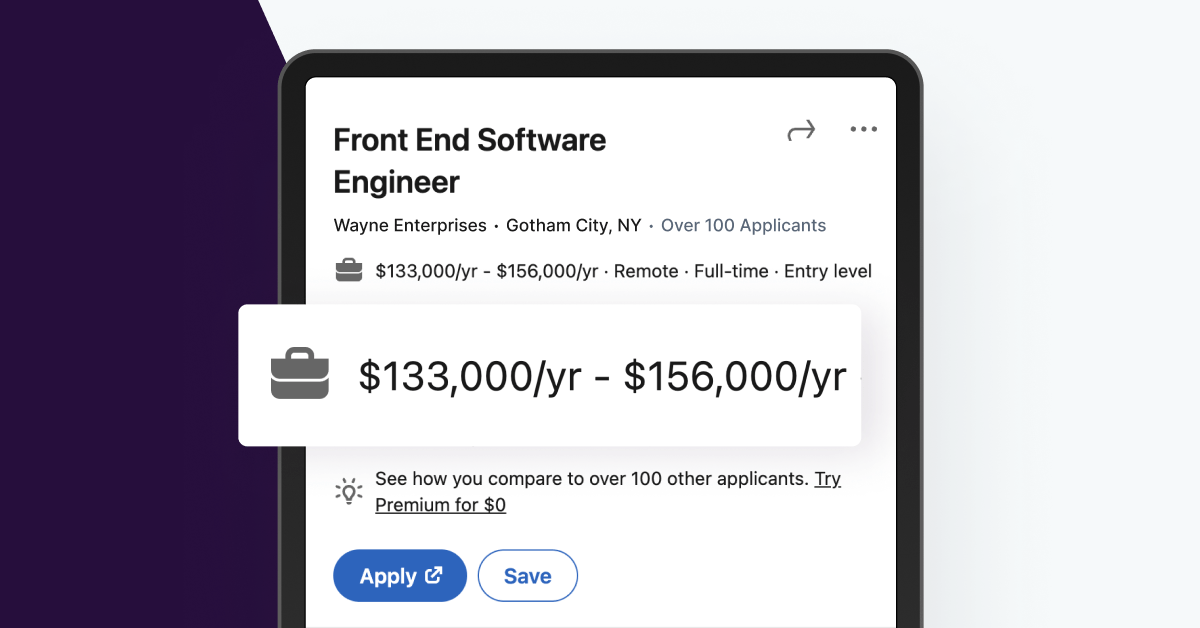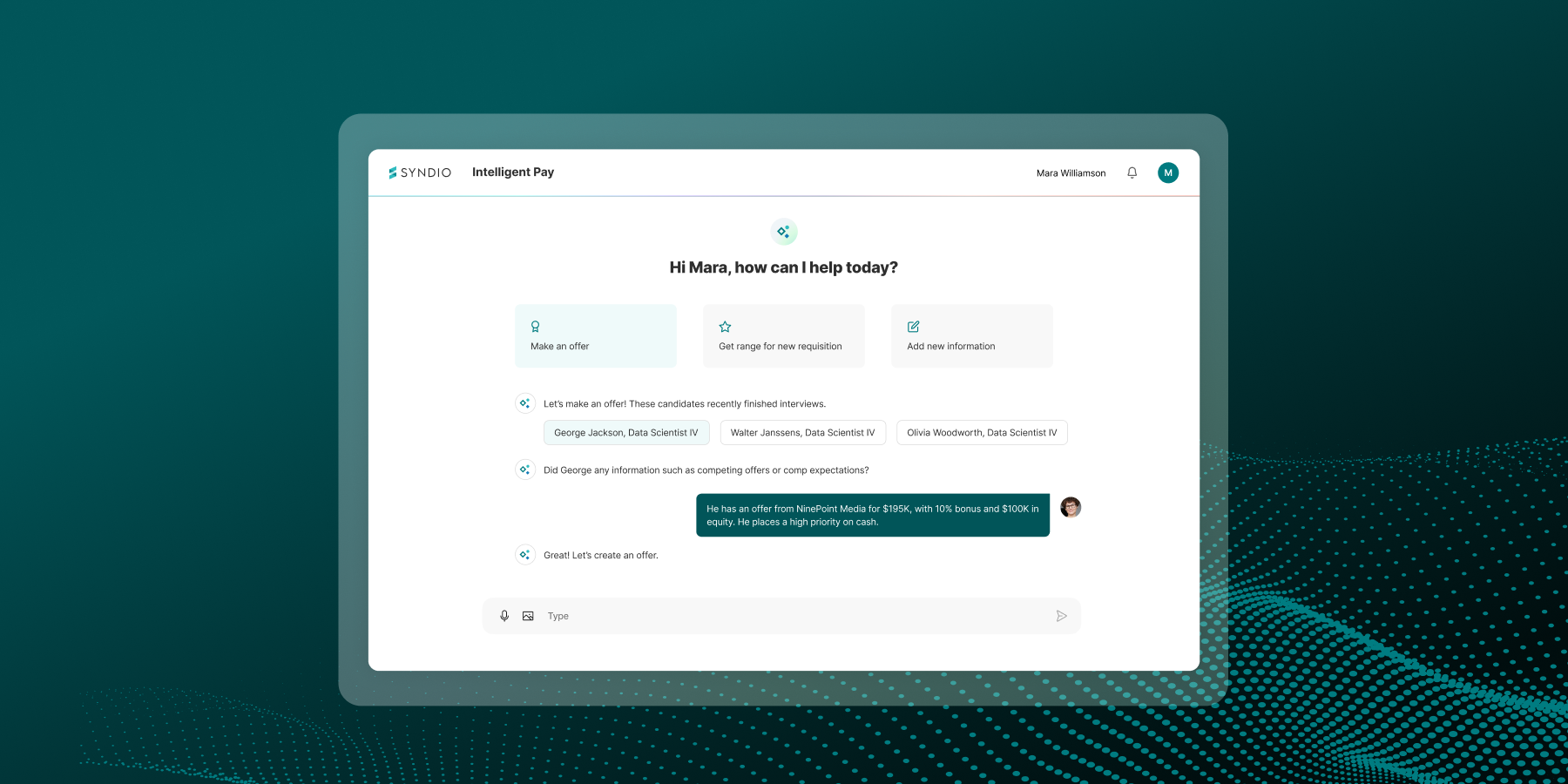The pay transparency era is here, and it requires far more from businesses than simply posting salary ranges. Here’s what every HR leader needs to know about pay transparency, why it’s important, and best practices for implementing it as part of your broader workplace equity strategy.
Pay transparency definition
Pay transparency is the practice of sharing information about compensation. It includes making salary ranges public, sharing information about employee pay ranges internally, and explaining how compensation decisions are made.
While pay transparency was initially connected to employees sharing salaries and legislation requiring companies to post salary ranges, it has evolved to encompass a more strategic business initiative. Today, pay transparency includes:
- Doing the work to establish pay equity and compensation consistency
- Being able to explain why people are paid what they’re paid, including how pay is determined and whether your pay policies are equitable and consistent
- Posting salaries and sharing workplace equity metrics from a place of confidence
Why is it important?
The goal of pay transparency is to foster fairness, equity, and accountability within an organization. And leaders around the world are feeling increased pressure to deliver on that goal.
Pressure is coming from employees and candidates, who expect companies to be more open about pay and career movement, and are choosing to apply to, work for, and stay with employers based on that transparency. For example, four out of five workers say they are unlikely to apply to a job that doesn't provide a pay range.
Leaders are also facing pressure from organizations that are analyzing and rating companies based on pay equity and opportunity equity, such as Arjuna Capital’s Racial and Gender Scorecard, JUST Capital’s America’s Most JUST Companies, and The American Opportunity Index. This is one driver in the wave of employers disclosing more than what’s required by law. By being proactive about sharing information like pay gap metrics, leaders can shine a spotlight on the good work they’re doing and acknowledge the work still to be done before others shine a (potentially unfavorable) light for them.
Boards are also putting pressure on executives to be more transparent and asking more questions about workplace equity metrics. This is due to a combination of factors, including increased shareholder proposals on pay equity, an urgent talent agenda, and growing regulatory requirements around the globe.
Regulatory requirements around pay transparency are no longer as simple as posting salary ranges or reporting on pay data. The European Union’s passage of the EU Pay Transparency Directive is ushering in a new standard in pay transparency, demanding unprecedented openness around pay and career progression.
Pay transparency and pay explainability
Pay transparency and pay explainability are inextricably linked. Pay explainability refers to how well an organization can provide clear and comprehensive explanations to employees about multiple dimensions of compensation and career opportunity.
Pay explainability comes into play on an employee level. When you post ranges, you need to be ready to answer employee questions. Pay explainability is also a consideration in the face of expanding legislation. The more information you disclose — whether by choice or by law — the more you need to explain the “why” behind it.
According to Gartner®, "Employees' perceptions about their pay are not encouraging — only 32% believe their pay is fair, 34% believe it's equitable and only 40% believe that pay procedures and practices are applied consistently. The lack of transparency about pay and how equity is assessed exacerbates employees' perception that pay is unfair."
Companies that don’t explain pay can end up with a trust problem; those that are proactive about explaining pay (and opportunity) foster trust and accountability as an employer of choice.
7 benefits of pay transparency
When companies approach pay transparency only as a requirement, it can feel like a burden. When approached as an opportunity to better connect with employees, it will deliver significant value to the organization.
Here are seven benefits of approaching pay transparency in an intentional and comprehensive way.
- Ensure fairness and equity. Transparent pay practices ensure that employees who are performing substantially similar or comparable work are compensated in an equitable way — based on skills and experience, not on gender, race, or other categories legally protected from employment discrimination.
- Build trust. When a company commits to pay transparency and makes compensation information accessible to employees and candidates, it creates a more open workplace culture that builds trust. According to research from Gartner, educating employees about how pay is determined increases employee trust by 10% and increases pay equity perceptions by 11%.
- Create accountability. Establishing and regularly revisiting pay transparency commitments establishes built-in accountability for your organization. A consistent communications strategy allows you to share incremental progress and drive accountability with employees, candidates, investors, and the public.
- Attract and retain top talent. Transparent pay practices that set clear expectations about compensation can help attract and retain top talent. Prospective employees are more likely to accept job offers when they have clarity into compensation. Data from Gartner shows that nearly 70% of employees would take one job offer over another based on the organization's transparency practices. In addition, current employees are less likely to leave if they know their pay is fair and competitive. While Buffer’s approach is an extreme example of pay transparency, it helps employees feel respected by their employer and has contributed to a 94% retention rate.
- Facilitate performance management discussions. When employees understand how their compensation is linked to their performance, they are more motivated to excel and achieve their objectives. Transparent pay criteria also help managers provide feedback that effectively supports career development.
- Ensure compliance. Embracing pay transparency now mitigates future risk, including increased legislative requirements to disclose metrics about equitable pay and equitable career opportunity.
The evolution of pay transparency laws
The first wave of pay transparency laws were adopted in the U.S. beginning in 2018 and centered on pay scale disclosure. The laws were reactive, requiring that companies provide information only if requested by an employee.
In 2021, pay scale disclosure laws in the U.S. shifted to be more proactive. This wave of laws started to require companies to disclose salary ranges during the hiring process and include salary ranges in public job postings. In 2022, pay scale disclosure laws passed at a breakneck speed. In 2023, two more states — Illinois and Hawaii — joined the list, and more laws are going through the legislative process in 2024.
The trend of jurisdictions requiring public pay reporting is also driving more transparency. Currently, 28 countries require global pay reporting.
The biggest shift in transparency legislation has come with the EU Pay Transparency Directive (2023), which will bring pay scale disclosure to Europe in 2026 (or before) and which also sets a new standard for pay transparency. It calls for unprecedented openness in both pay and career progress and requires companies to examine and report on both pay equity (for groups of employees performing work of comparable value) and career progression, starting in 2027.
Does this legislation have an impact?
One study found that in February 2020, only 18% of U.S. job listings had employer-provided salary information, but by August 2023, that number was over 50% — a 178% increase. In addition, Syndio data shows that in four of the six U.S. states with pay transparency laws, the gender pay gap is shrinking more rapidly than the national average.
Pay transparency and the unadjusted pay gap
As transparency legislation demands grow, one metric that leaders need to pay close attention to is the unadjusted pay gap. The unadjusted pay gap is the difference in mean or median earnings between two populations of employees who perform similar jobs, without statistically accounting for factors such as tenure or years of experience
In the U.S., California requires employers to report unadjusted pay gaps. With the passage of the EU Directive on Equal Pay and Transparency, even more employers in the EU will soon be required to assess, remediate, and publicly report on gender pay gap results.
The new legislation not only normalizes pay gap reporting but requires companies to be transparent about how they plan to close the gaps.
Is unadjusted pay gap reporting coming to the U.S.? >
Pay transparency best practices
Total Rewards programs were originally designed to manage pay as part of a company’s compensation philosophy, not with pay communications in mind. To address this challenge, Total Rewards leaders must team up with their counterparts in Legal, Comms, Talent Management, Talent Acquisition, and DE&I to achieve the shared goal of delivering — and communicating about — rewards that are competitive, fair, and easy to explain.
Below are some actions that cross-functional teams might take as part of a year-one transparency roadmap:
- Align on compensation policies and prepare to post salary ranges
- Assess global reporting needs and inventory disclosure requests
- Establish a foundation of pay equity
- Develop you pay transparency communications strategy
- Educate and train managers on how to discuss pay transparency
- Define and validate pay, performance, and representation “fairness” across the organization.
HR leaders can also follow several best practices in their efforts to be more transparent:
Assess your compensation programs. Take time to articulate why you pay what you pay and develop clear compensation policies that outline salary ranges, pay grades, and criteria for advancement.
Make compensation information accessible internally. Be open and transparent with employees about how pay decisions are made and what factors influence compensation and career advancement.
Communicate progress externally. Once you start to be transparent, it leads to calls for greater transparency. Rather than going “all in” all at once, pace it out what you share and when. Create a consistent communications cadence and demonstrate progress by mapping back to data-driven goals.
Embrace a data-driven approach. The sweeping changes brought on by the latest legislation signal an urgent need for leaders to prepare to share more information about their workplace equity narrative. This requires using data to inform decisions, track progress, and communicate areas for improvement and progress both internally and externally.
Train your people managers. Your managers are on the front lines of educating employees about pay. Equip your managers with information to explain where an individual employee fits within a range, what’s needed to move up, and how differences in pay are the direct result of the company’s compensation philosophy.
Build credibility with certification. Some companies pursue certification as a valuable proof point to boost their employer brand. Organizations like Fair Pay Workplace and EDGE require that companies undergo a rigorous pay equity evaluation and commit to ongoing analysis.
What's next: Broadening the scope of workplace transparency
The push towards transparency is moving beyond pay to encompass all facets of workplace equity.
Companies are already starting to focus on opportunity transparency, or transparency around opportunities for promotions and career growth. This will be amplified by increased requirements for pay gap reporting, which are less about pay equity and more about opportunity equity.
Syndio’s Workplace Equity Platform helps HR leaders meet the growing demands for pay transparency and foster a culture of trust and openness. With Syndio, companies gain the data-driven insights they need to deliver pay and opportunity equity throughout the employee lifecycle and communicate with confidence.
Learn more about how to advance your commitment to pay transparency with our Workplace Equity Communications Playbook.
The information provided herein does not, and is not intended to, constitute legal advice. All information, content, and materials are provided for general informational purposes only. The links to third-party or government websites are offered for the convenience of the reader; Syndio is not responsible for the contents on linked pages.



